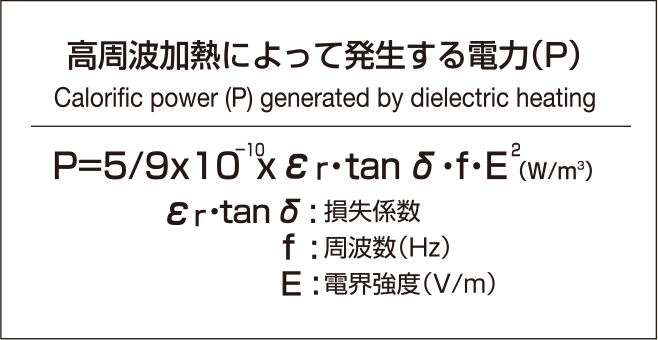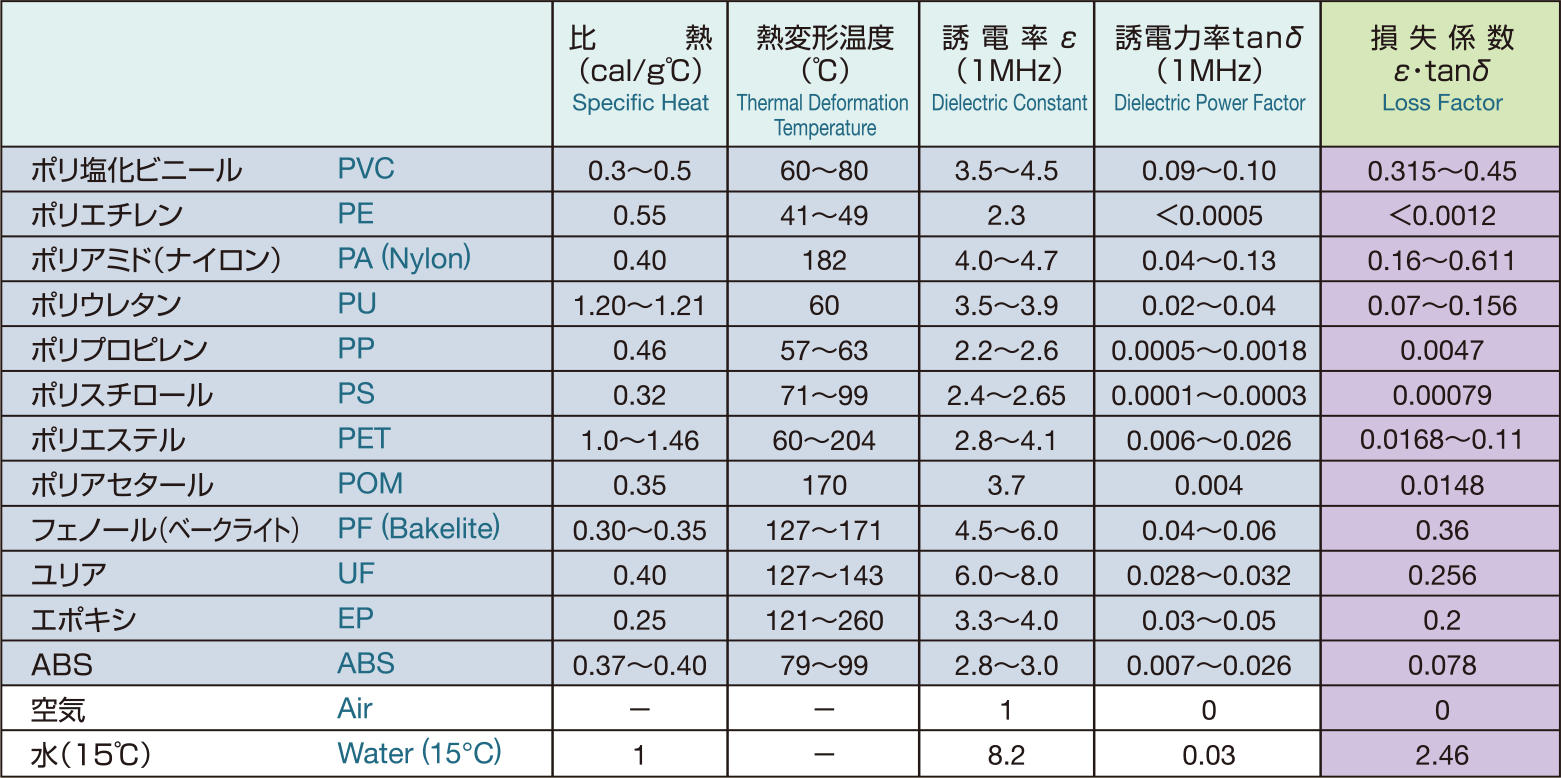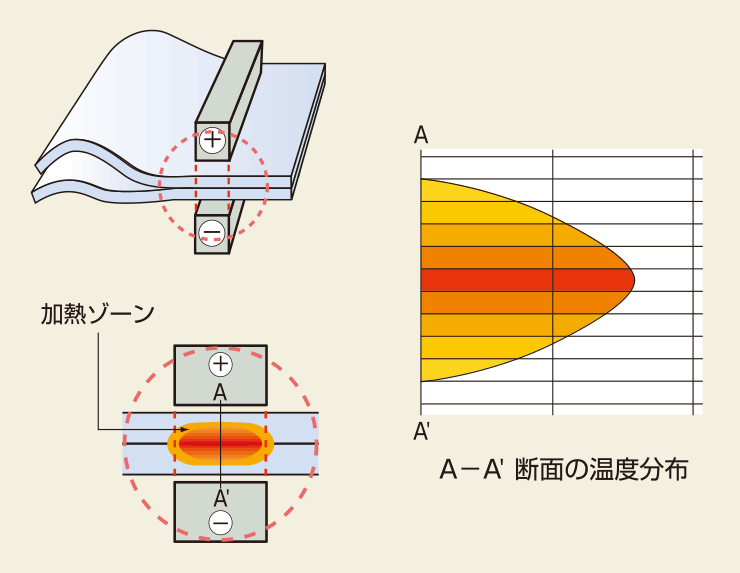Plastic processing equipment Technical information
When plastic materials, film sheets, or other electrical insulators are subjected to an electrical field having strong high frequency – a type of electric wave – collision, vibration and friction occur inside the substance at the atomic level. This, in turn, causes self-heating, which bonds and welds the film.
■Power Generated by Dielectric Heating

The electric power per unit volume consumed in dielectrics during high-frequency dielectric heating is calculated using the formula presented on the left.
The power generated is proportional to the frequency (f), loss coefficient (εr・tanσ), and electric field intensity (E2). The loss coefficient (εr・tanσ) is the product of relative permittivity (εr) multiplied by the dielectric loss angle (tanσ).
Table 1 presents the physical properties of typical thermoplastic resins. When the frequency and electric field intensity are constant, the larger the loss coefficient the higher the heat generation efficiency.
Physical Properties of Thermoplastic Resins

■How High-frequency Welding Works

High-frequency molds are created so that they fit into the forms of sites to which positive and negative electrodes are welded. Resins and films between pairs of electrodes generate heat in high-frequency electric fields.
The whole area between the electrodes is basically heated, and a temperature difference is caused if the temperature of the electrodes is maintained at room temperature. Temperature differences due to heat release are expressed in the temperature distribution chart on the left, and specific areas that need to be melted can be selectively heated. This feature of high-frequency welding helps produce beautiful finished products while preventing thermal effects (including degradation, expansion, and contraction) on the surface and surrounding areas.
